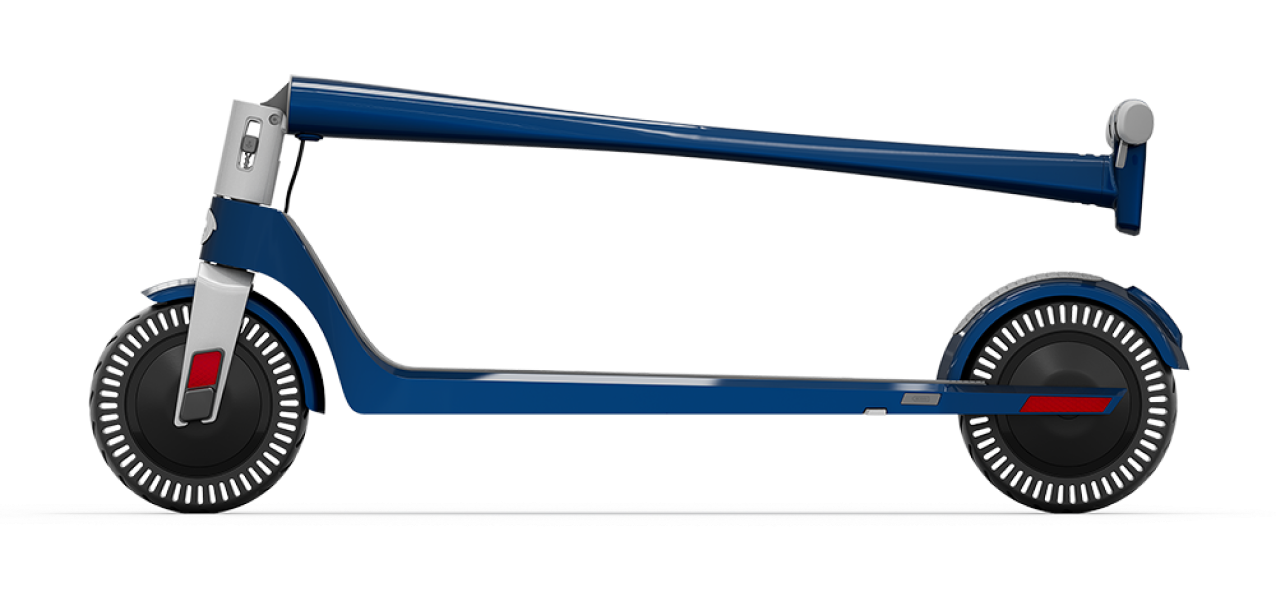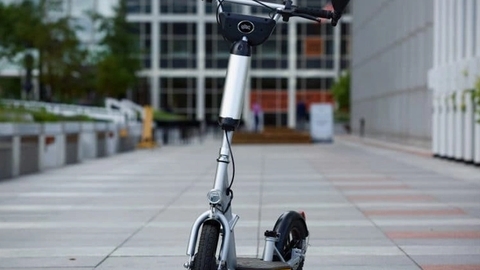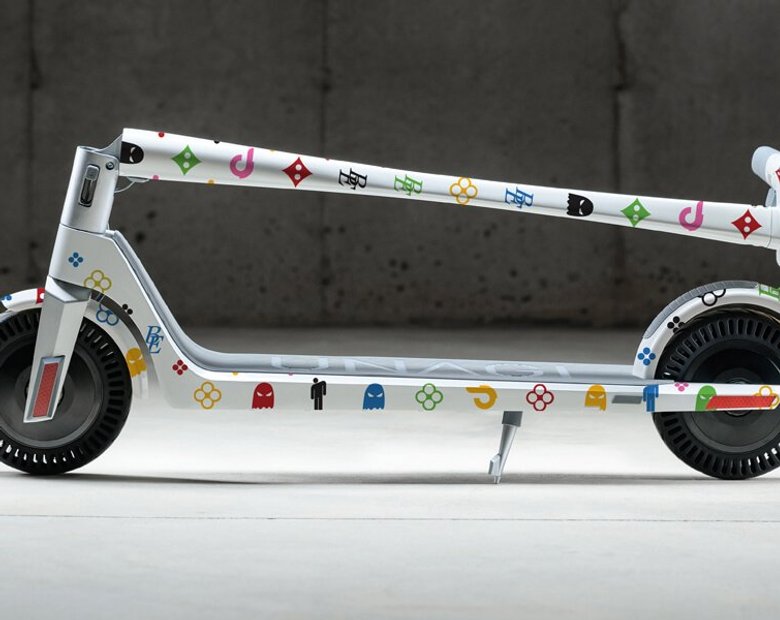With White Glove Love, we go where you go. All-Access members who are traveling can get an Unagi electric scooter for use during their trip, delivered to their hotel or Airbnb, at no extra charge. Now available in 8 U.S. cities.
Getting started in the world of e-scooters can be pretty daunting, thanks to the "heavy terms" used to describe the performance of electric scooters. Terms such as torque, watt, voltage, amperes and more can be challenging to understand, especially if you don't have a background in mechanics or electronics. For first-time scooter buyers, all these terms may seem like rocket science; but they are actually simple vocabularies to describe the various performance aspects of the scooter.
Understanding all those terms relating to the performance of an electric scooter will enable you to choose an ideal scooter based on your exact needs and understand your scooter even better. By getting to know e-scooter voltages, watts, amperes and more, plus how they affect performance, you'll have a completely different perspective about your scooter. You’ll also be able to cut dependence on marketers, mechanics and so-called "experts'': some of whom con or misadvise you.
This performance guide will give you an insight into the different metrics of electric scooters, enabling you to make informed decisions regarding what’s important performance-wise.
Motor
The motor is the heart of an e-scooter and determines various aspects of the scooter, including hill-climbing, acceleration, top speed, performance and power consumption. The primary role of the motor is to propel the e-scooter by providing it with the power it needs to move forward. Essentially, the motor transfers energy from the battery to the wheels to propel it forward at a given speed. An e-scooter motor is linked to a controller, which acts as its "brain", regulating the different functionalities of the motor. A motor controller starts/stops the motor, regulates the torque, determines the riding speed by regulating the amount of power applied to the motor and protects against electricity overloads or any other faults in the motor.
There are two types of electric scooter motors primarily used in e-scooters: brushed DC motors and brushless direct current (DC) electric motors. Brushed DC motors are a form of motor technology dating back to the 1800s. In these motors, mechanical brushes power different coil phases and provide motion. These brushes tend to wear out with time, thanks to friction. In the long run, the worn-out brushes could cause voltage irregularities that can be dangerous.
Brushless DC motors, also known as electronically commutated (EC) or BLDC motors, are an improvement of brushed DC motors, launched in the 1970s. In brushless motors, the mechanical brushes that power different coil phases have been replaced by digital switching circuitry. Brushless DC motors are primarily preferred in modern e-scooters. They’re more efficient, tend to run quieter, are less prone to overheating, are more durable and have better power-to-weight ratios.
Electric scooters are fitted with either a single motor, such as the popular Turboant X7 Pro or dual-motors, such as Unagi Model One E500. Most powerful e-scooters have dual hub motors, i.e. two motors, a motor in the front and the other located at the rear wheel. However, riders can switch on/off the second motor in dual-motor scooters to achieve more power or speed.

Motor Power
Electric scooter motor power is given in Watt (W), which essentially is a measure of power equivalent to joules per second or energy per second. 745.7 watts is equal to 1 horsepower. The watts indicated on a motor are the amount of power the motor can consume. A motor with a higher wattage rating means that it consumes a colossal amount of energy within a concise time. It also means that the motor is powerful since the more energy a motor consumes, the more mechanical power it will produce. By being powerful, the motor will accelerate more quickly, sustain heavier riders and scale steep hills. However, it will drain the battery much faster and make the scooter heavier.
Electric scooter motor wattage doesn't always provide a clear picture of how powerful the motor is; a lot of factors come into play. For instance, two motors could be rated 350W, meaning they both consume 350W of electrical power. However, they may not produce the same mechanical power. By this virtue, motor power is not an indication of the motor's efficiency- no manufacturer will tell you this. If motor power is not provided, you can calculate it by multiplying voltage (volts, V) by current (amps, A).
Another aspect of motor power is torque. Torque is the twisting force produced by the motor to rotate the e-scooter’s wheels and eventually propel it forward. Torque is usually quoted in Newton-meters (Nm) units in countries using the Metric system and pound-foot (lb-ft) in countries using the Imperial system. Most e-scooter manufacturers don't quote the torque, but you can calculate it by dividing the motor power in watts by max revolutions per second of the motor. The higher the wattage rating of an e-scooter, the greater the torque and acceleration.
Motor Performance
The performance of the motor affects various metrics of the e-scooter, notably speed, acceleration, gradeability and weight capacity. There are two key ways of measuring a motor's performance: nominal power and peak power.
Peak Power
Peak power is the most powerful point in a motor’s cycle. The peak power is the maximum torque, power and speed that the motor can achieve. Motors are designed to operate at or near their peak power to get the most out of them. However, motors can be operated outside of their design range and still produce power, which will reduce the motor’s life or lead to frequent malfunctions.
Peak power essentially isn’t an accurate way of measuring motor performance unless you want to compare two motors. Peak power is usually 2 to 5 times greater than nominal power. As such, some manufacturers quote the peak power instead of the nominal power to boost the stats of the scooter and achieve a marketing advantage.
Nominal Power
Nominal Power in motors is the term used to define the total power at its rated voltage and frequency. Nominal power, also called sustained or continuous power, is the maximum amount of power that an e-scooter motor can consume for an indefinite period. Nominal power is usually considered the motor's actual wattage and can compare two scooters in terms of power performance. However, note that several factors (not only power) determine the overall performance of the scooter, including its efficiency.
How Wattage/Power Affects Performance in E-Scooters
An e-scooter’s motor power/ wattage affects several performance aspects of the scooter, notably maximum range, load capacity, hill climbing, speed and acceleration. E-scooters with higher motor ratings will typically have better hill climbing capabilities, greater load capacity, improved speed and acceleration as compared to ones with lower motor ratings. Let’s take a look.
Hill Climbing
The motor wattage is one of the biggest factors that determines the hill-climbing capabilities of an e-scooter. The motor's nominal power (not peak power) is directly proportional to the angles/percentage climb that can be conquered by the scooter. Therefore, the more Watts of power a scooter has, the better it will be able to climb hills.
Scooters with less than 250 watts of nominal power will have trouble climbing even moderately steeped hills. This is regardless of the scooter's weight, battery capacity or even the rider’s weight. If you're looking for a scooter with average hill-climbing ability, at least 15% gradeability, get an e-scooter with at least 350-400 Watts.
Speed and Acceleration
The top speed and acceleration of an e-scooter are widely dependent on the motor power. A higher motor watt rating will typically have a higher speed and accelerate more quickly. However, the speed and acceleration of the scooter are also dependent on several factors, including the level of charge in the battery, wheel size, inclines, type of terrain and weight of the riders.
Typically, budget scooters with 200-600 Watts of power usually have a top speed of 19-45 km/h, while most powerful electric scooters with over 5000 Watts of nominal power can reach a top speed of 100 km/h or more.
Load Capacity
An e-scooter’s maximum carrying capacity isn’t just dependent on the structural strength of the scooter-the motor power also determines the carrying capacity. A scooter with a higher motor power will have more torque, thus can sustain huge amounts of weight. On the contrary, scooters fitted with 250-350W motors will have sufficient torque to sustain 220-265lbs. weight. Of course, heavy-duty dual-motor scooters such as the Apollo Pro or the Kaabo Mantis Pro SE have a higher load-carrying capacity. They will carry heavier riders compared to single motor scooters.
Range
Aside from the battery capacity and other external factors, the motor power will impact the range. Powerful motors consume a lot of power and typically drain batteries faster, leading to reduced range. However, powerful scooters usually come with batteries with higher capacities to sustain their higher demand for power and consequently prolong the range.
Classification of Scooters Based on Motor Power
Electric scooters come with different motor power, which can be used for their classification. Entry-level, budget or commuter e-scooters are fitted with a motor power of less than 500W. Intermediate e-scooters have a motor power rating of 500-1000W, performance and extreme performance e-scooters have motor power of 1000-3000 W and above, respectively. Hyperscooters such as the Rion RE90 have a motor power of above 10, 000W
Less than to 500W (Entry level/ Budget/ Commuter)
Electric scooters that have motors rated 500W and below fall in the entry-level/budget/commuter category. These scooters are popular among young and novice riders and come at a fantastic value. 500 watts electric scooters have top speeds of 16 mph to 30 mph, capacities of 220lbs.-265lbs. and a range of 15miles to 40 miles based on the battery capacity.
500W e-scooters usually strike a balance between build quality, portability and price. Common electric scooters that fall within this category include the Turbowheel Swift (500W), Hiboy S2 Pro (500W), Xiaomi M365 Pro (300W), Turboant X7 Pro (350W) and Glion Dolly (250W), among others.
500- 1000 W (Intermediate/ Commuter)
500-1000W e-scooters fall in the intermediate/commuter category and are best used for regular commuters and adults who’re looking for a powerful, thrilling ride. These scooters are slightly more expensive, have more torque and are much faster as compared to entry-level scooters. If you’ll be spending most of your time riding scooters, the 500-1000 W category is often recommended. These scooters can reach top speeds of up to 37 mph with ranges of up to 62 miles.
Examples of 500-1000W scooters include the impressive Unagi Model One E500 (500W), Dualtron 2(800W), Inokim OX (500W) and Zero 10 (1000W).
Over 1000-3000 W (Performance)
Most electric scooters with a 1000-3000W motor rating are designed for performance. These scooters are made for adrenaline junkies who love extreme speeds. They have greater top speed, long-range, impressive gradeability and outstanding off-road capabilities. In most cases, 1000W-3000W e-scooters have dual hub BLDC motors placed both in the front and rear tyres. Examples include Turbowheel Lightning (2000W), Zero 10X (2000W), and Inokim OXO (2000W), among others.
3000W and Above (Extreme Performance)
3000W and above e-scooters are customised to offer extreme performance. This scooter can hit eye-blinding speeds of up to 62 mph and offer an outstanding range of 75 miles and above. These are not your ordinary e-scooters, and you'll need to exercise maximum caution when riding them. Examples include the VSETT 11+ (3000W), Dualtron Thunder 2 (5400W), WEPED FF (6000W) and Kaabo Wolf King GT (4000W)
Hyperscooters- 10, 000W Scooter
10 000W electric scooters are high-performance e-scooters. They are essentially the "Bugatti" of electric scooters as they are the fastest and most powerful scooters. These scooters behave like fast bikes and cost about as much. The Rion RE90 is currently the only known hyperscooter fitted with 10 000 dual brushless motors. It has a range of 60 miles (Eco) and 43 miles (Turbo). With a top speed of 80mph, the Rion RE90 is the fastest ever made e-scooter.
Battery
The battery is one of the most crucial components of an e-scooter responsible for powering all components, including the motor, LED lights, LCD display, motor controller, among others. Electric scooters are fitted with battery packs made up of individual battery cells. These cells are controlled and monitored by an electronic circuit called a battery management system. The BMS ensures the battery pack operates safely and efficiently to prolong battery life. Most electric scooter battery packs are made of 18650 cells, i.e. lithium-ion batteries with 18 mm x 65 mm cylindrical dimensions. Higher performing scooters come equipped with 21700, whose cell dimensions are 21mm x 70 mm, and have a larger battery capacity than the 18650.

What is Battery Capacity?
Battery capacity measures the amount of energy a battery can store. Electric scooter energy capacity is rated in units of Watt-hours (denoted Wh). This rating describes how much energy the battery is capable of storing. For instance, a battery with a 2 Wh rating means that it stores sufficient energy to supply two watts of power for one hour.
Batteries with a higher capacity can store more energy than those with a lower capacity. The capacity affects battery performance in several ways. First, it determines how long the battery will last before it needs to be recharged. Second, it affects the amount of power that the battery can deliver at any given time. And third, it determines the maximum current that the battery can provide.
Electric scooter batteries with a higher battery watt-hours rating mean a longer range depending on the motor power rating. Entry-level/commuter/budget e-scooters with a battery capacity rating of 150-500 Watt-hours have optimal ranges of 9-25 miles on a single charge. In contrast, more powerful e-scooters (1000W and above) have higher battery capacity (thousands of watt-hours) to keep up the considerable power demand on the motor and other components.
Not all scooter manufacturers quote the battery capacity in Watts-hour. In such cases, they state the Ampere-hours (Ah) and voltage expressed in Volts (V).
Estimating the Battery Capacity in Watt-Hours:
The capacity in watt-hours is equal to the power (in watts) multiplied by the time needed (in hours). Since we know that power = current x voltage, we can also express this as:
capacity (watt-hours) = voltage x current x time
or simply,
capacity (watt-hours) = voltage x amp-hours
How we Denote Battery Capacity
While electric scooter battery is denoted in Watt-hour, there are some abbreviations that the electric scooter manufacturers can quote relating to the battery capacity. For instance, a battery quoted as 20V, 45 Ah 900Whs, with 21700 Samsung Cells means:
20V - Volts (V) is a measure of “electric potential” or how fast the charges flow. A battery pack voltage rating specifies the potential difference between the two cell terminals when it is discharging. The voltage rating can be used to obtain information about how much energy is stored in the battery and what electrical loads the battery can support. A battery with a higher voltage rating means that more charge is released to the motor controllers simultaneously, providing more power to the motor at a go.
A battery's voltage rating is the maximum voltage the battery can provide. This particular battery has a maximum of 20 V. The voltage rating is important to know because it can help you choose the right battery for your scooter. For example, if you need a battery to power a scooter that requires 12 volts, you would want to choose a battery with a voltage rating of 12 volts or higher. If you choose a battery with a lower voltage rating, the scooter may not work properly.
45Ah - An ampere-hour is the amount of electric current that flows through a battery in one hour. This measurement is used to determine a battery's capacity or how much energy it can store. Batteries with a higher ampere-hour rating can provide more power for longer periods of time.
Most electric scooter batteries are rated in amp-hours (Ah). The higher the rating, the longer the battery will last. For example, a 20-volt electric scooter battery may be rated at 45 Ah, like in our case. This means that the battery can supply up to 45 amps of current for one hour before being drained.
900Whs - Watt-hours (WHS) is the measure of battery capacity. It’s calculated by multiplying V x Ah.
21700 Samsung Cells - The number 21700 denotes the size of the individual cells that make up the battery pack. 21 marks the diameter, while 70 refers to the height. Samsung is the brand that manufactures the battery.
How Battery Capacity Affects Various Aspects of Performance
The battery capacity is an essential determinant of various performance aspects of the scooter, notably range, charging time, power and hill climbing. Read on to find out how each of the above-mentioned performance attributes is determined by battery capacity.
Range
Electric scooter range refers to the distance the scooter can cover on a single battery charge. While range is determined by numerous factors, including the type of terrain, rider’s weight and more, the scooter’s battery capacity is the primary range determinant. The range is directly proportional to the energy stored in the battery measured in Watt-hours (Wh). Scooters with higher capacity (Wh) batteries can typically cover more distance on a single charge as compared to those with a lower battery capacity. High battery capacity means higher battery watt-hours, translating to a longer range based on the motor.

Charging Time
Charging time in e-scooters refers to the time needed to charge the battery from empty/ fully discharged to full. E-scooters have different charge times, usually influenced by the battery capacity and the type of charger. A battery with high energy storage capacity (Ah) will typically take long to charge unless a highly efficient (fast) charger or dual chargers are used. The charging time of e-scooters is calculated using the formulae below:
Charging time (h) = Battery energy capacity (Ah) / [Charger current (A) * Charging efficiency (%)]
Apart from the battery capacity, the type of battery, i.e. Lithium-Ion or sealed Lead-Acid and the charger's output current, expressed in Amperes (A), also affect the charging time.
Power
Battery capacity also impacts the power of an e-scooter. You might have noticed that your scooter moves faster at the start of a ride as compared to the mid-level or the end when the battery is depleted. Batteries with high voltage deliver a greater amount of charge to the motor, increasing its power and consequently the speed of the e-scooter. Electric scooter batteries are usually available in either 24 or 48 volts, with the latter being more powerful.
Hill Climbing
Since the battery determines how powerful the motor is, to some extent, it also has a hand in determining the scooter's hill-climbing ability. A higher capacity battery will deliver more power to the motor, significantly enhancing the hill-climbing ability. Also, when the battery depletes after a long ride, it will provide less power to the motor, affecting the scooter's hill-climbing capability.
Different Scooter Categories and their Battery Capacity
Electric scooters are grouped into different categories based on their battery capacity, i.e. entry-level, intermediate and performance categories. Below is the average capacity of the batteries as per each category. However, this is just an average estimate, and some may fall below or above the given ranges.
Entry level/ budget/ Commuter(Less than to 500W) 130 Wh- 650 Wh
Entry-level/budget/commuter scooters will typically have a battery capacity of 130 Wh-650Wh and motor power of less than 500W. These scooters are ideal for novice and inexperienced riders who want to streamline their last-mile commutes. With a battery capacity of 130-650, entry-level scooters have an average range of about 10-25 miles. They take around 2.5-6 hours to charge based on the specific battery capacity, battery brand, charger type and capacity (Amperes, A) and more.
Intermediate/ Commuter (500- 1000W) 650Wh-1000 Wh.
Intermediate/commuter e-scooters are fitted with 650-1000 Wh. batteries which are more powerful than those in the entry-level category. These scooters are ideal for experienced riders, both teenagers and adults alike. They can achieve a range of up to 30 miles. With these scooters, you can expect a charge time of 4-9 hours based on the battery brand.
Performance (Over 1000- 3000W) 1000Wh to 3000 Wh
With 1000-3000W motor power, performance e-scooters need higher capacity batteries to run the powerful motors and other scooter components. These scooters are fitted with large battery packs with a capacity ranging from 1000Wh to 3000Wh. Thanks to the high battery capacity, powerful scooters can achieve an impressive range of up to 93 miles for the Dualtron X2 fitted with a 2940Wh battery.
Battery Types and Capacity
There are two types of batteries that are used to power e-scooters: Lithium-ion and Lead-acid batteries. Each of these batteries has its benefits and downsides, but Lithium-ion batteries are primarily preferred in modern scooters.
Lithium-Ion Batteries
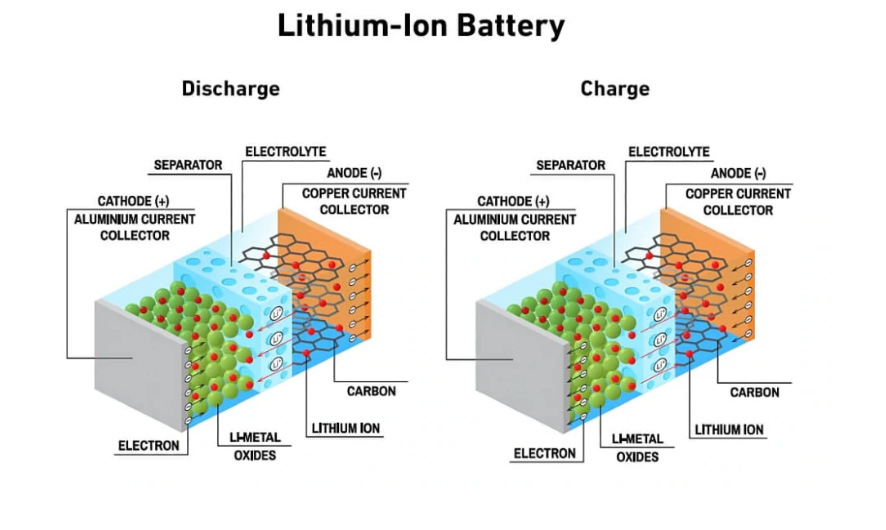
A Lithium-Ion battery generates energy (electricity) via a series of different chemical reactions, including Lithium manganese oxide, lithium iron phosphate, lithium cobalt oxide and more. They are primarily preferred in e-scooters due to their high energy density, i.e. the amount of energy stored per their physical weight.
Lithium-ion batteries are also durable as they discharge/recharge numerous times without losing their storage capacity. Most Li-ion batteries can handle between 300 to 500 charge and discharge cycles before they start to lose capacity. This is equal to 3000 to 10000 miles for an average scooter.
Lead Acid Batteries
While they’re not common, lead-acid batteries are still found in some inexpensive e-scooters. These batteries generate electricity through a double sulfate chemical reaction. They are affordable, have a poor energy density, are bulky and tend to be depleted quickly due to the crystallisation of lead sulfate, i.e. sulfation. Lead-acid batteries used on electric scooters have an average battery lifespan of 200 cycles. Note that battery maintenance is also higher with this type of battery.
Battery Voltage
Battery voltage, denoted as “V”, refers to the difference in electric potential between the positive and negative battery pack terminals of the battery. Technically, voltage is the potential energy difference between two points in a circuit that will impart one joule of energy per coulomb of charge that passes via the current. To better understand voltage, think of a water tank; voltage is represented by the water pressure, while the charge is the amount of water present in the water tank.
24V and 48V batteries are commonly used in electric scooters. There are different variations of the battery voltage, i.e. full, nominal and cut-off voltage.
Full Voltage- Full voltage is the battery's actual output voltage, i.e. it has not been reduced by the resistance of the wires or battery management systems.
Nominal Voltage-Nominal voltage is the voltage with which a particular battery is marketed. For instance, a battery quoted with 12V as the nominal voltage means that the output voltage won't be exactly 12 volts. It may be 11.5, 12.5 or any figure close to 12 volts.
Cut-off Voltage- In different types of batteries, including lead-acid batteries, the battery cannot be discharged below a certain level or else permanent damage occurs. This voltage is referred to as the "cut-off voltage" and depends on several factors, including the type of battery, temperature, and discharge rate.
Different Voltage Ratings in Batteries
Below is a table showing different voltage ratings in batteries commonly used in electric scooters.

What is Voltage Sag?
A voltage sag is a voltage disturbance that can cause a substantial decrease in the voltage level of a battery. The term “voltage sag” usually refers to a decrease in the voltage magnitude that lasts for more than a fraction of a cycle and is often caused by a sudden increase in the load on the battery. Voltage sags can also be caused by system faults or switching operations. Voltage sags last for up to several hundred milliseconds, which is long enough to cause momentary interruptions in some battery operations.
Voltage sag is caused by various effects, including long discharge of the battery after long rides, electrical resistance, drop in temperature, battery chemistry etc. and will result in non-linear behaviour of the battery voltage. The voltmeter will indicate a faulty voltage reading with almost a 10% drop in capacity.
In most instances, voltage sag corrects itself in the end. You may just need to let the scooter rest for a while after long rides so that the battery can get back to its proper and accurate voltage level.
What Affects Voltage in Batteries?
Several factors can affect the voltage of a battery: the type of metal used in the electrodes and the electrolyte concentration (acid battery), the temperature, and other factors such as design and manufacturing. In general, however, these are the most important factors.
Correlation between Battery Voltage, Motor Voltage and Controller Voltage
Battery, motor, and controller voltage don't necessarily have to match. However, if the scooter uses a sine wave controller, the motor's voltage must match the controller’s. This is not the case with square wave controllers, as they are compatible with a wide range of motor voltage.
Battery voltage and motor voltage don't have to correspond. The voltage rating of a battery is only a nominal ratio. The actual voltage varies based on the type of battery, its state of charge, and its discharge rate. It may also vary based on temperature and how close the battery is to the end of its cycle. Therefore, a 350V motor can be seamlessly operated by a 36V battery or 48V or any other battery range.
Conclusion

Even for experienced scooterists, the motor and battery's technicalities can be challenging to understand. However, it's crucial to have some idea behind the functioning of the scooter and the terms used to denote specs such as voltage, charge, motor power etc. and how they impact performance in terms of range, load capacity, charging time, power, hill climbing, speed and acceleration.
By familiarising yourself with these technicalities, you will understand every aspect of your scooter better and choose an ideal scooter or help you choose the e-scooter that matches your exact needs. Besides, you'll cut over-reliance on mechanics and "experts" who end up misadvising you for their own selfish interests.

Read more.

Read more.

Read more.

Read more.

Read more.

Read more.

Read more.

Read more.

Read more.

“Is my scooter legal?” is a question many are increasingly asking. The micromobility industry is one of the fastest-growing and most exciting in the world—with promises for...in addition to abundances of the basics of time and money savings. And with this pace of innovation comes a struggle for regulation to keep up.
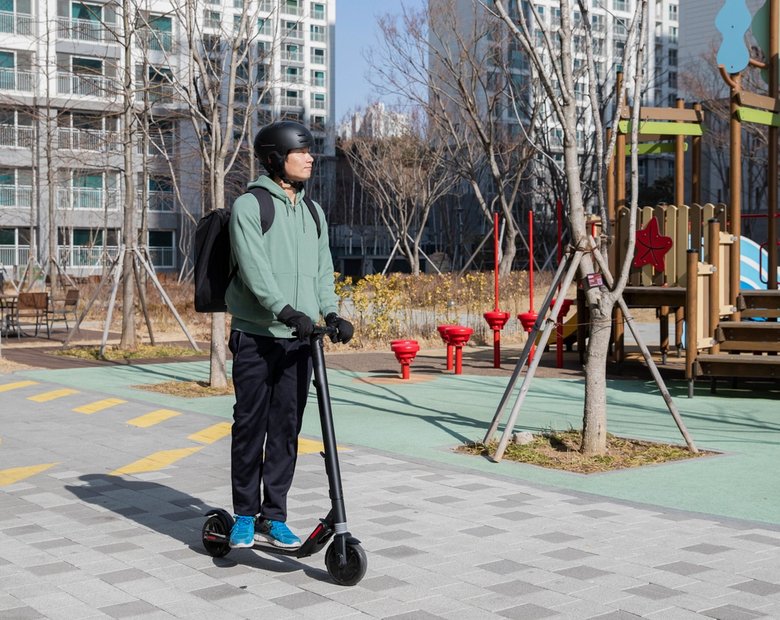
So, you're thinking about joining the electric scooter revolution, huh? You've seen those sleek and stylish scooters zipping around town, effortlessly gliding through traffic, and you can't help but wonder: Are electric scooters easy to ride?
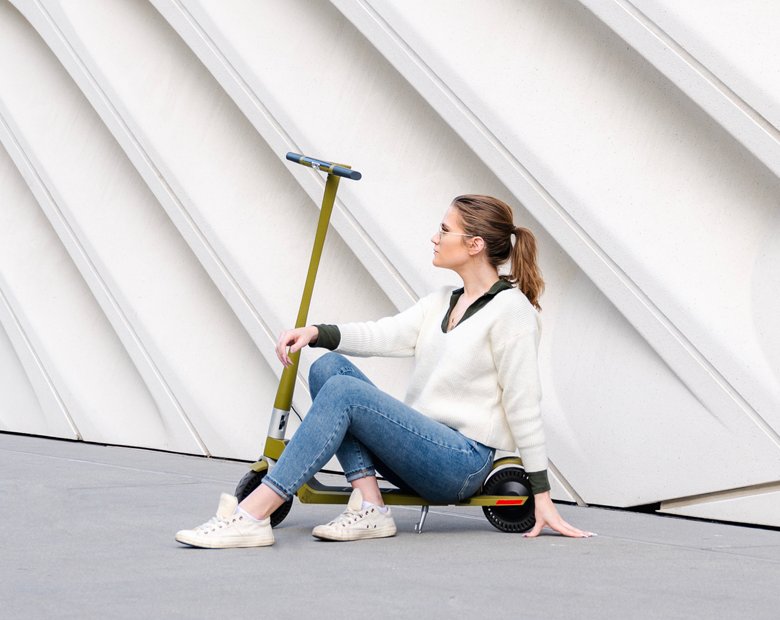
In this guide, we'll break down what defines a lightweight electric scooter, why you should choose one, and the top features you should look for.
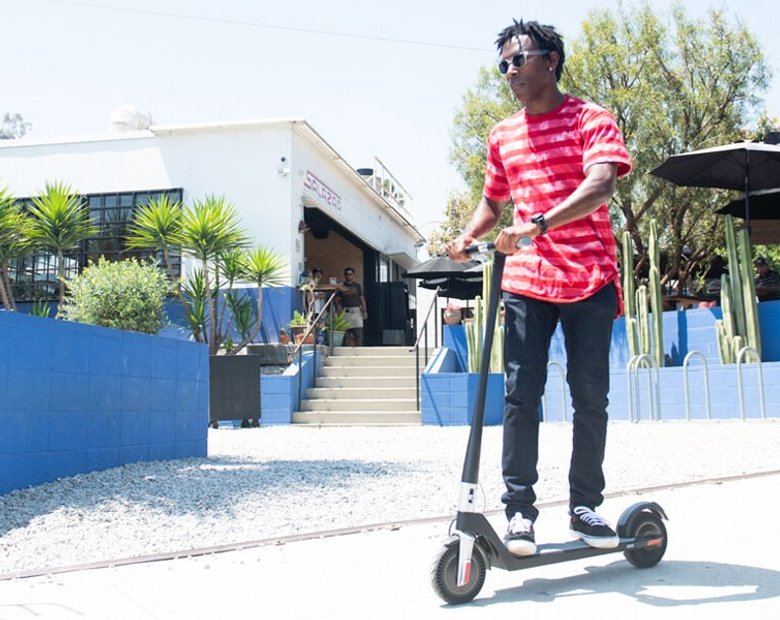
Want to get the most out of your electric scooter battery and extend your riding adventures? We've got you covered with our comprehensive guide full of maintenance tips and best practices.

*Disclaimer: Unagi, INC. has used best efforts, but does not in any manner guarantee the accuracy of the below findings regarding electric scooter laws in the United States or internationally. Electric scooter riders or those considering to purchase or begin…

It’s beyond question that we must drastically reduce carbon emissions in the coming years to head off the worst effects of climate change. How we do that has been a matter of considerably drawn-out debate. As individuals, it can be…

If you're considering riding an electric scooter for the daily urban commute - or even just for recreation - this article will give you the lowdown on getting insurance for an electric scooter.

In many regions, there's a clear restriction against riding electric scooters on the road, with the rules steering their use towards designated areas such as bicycle lanes, multi-use paths, and shared street paths.
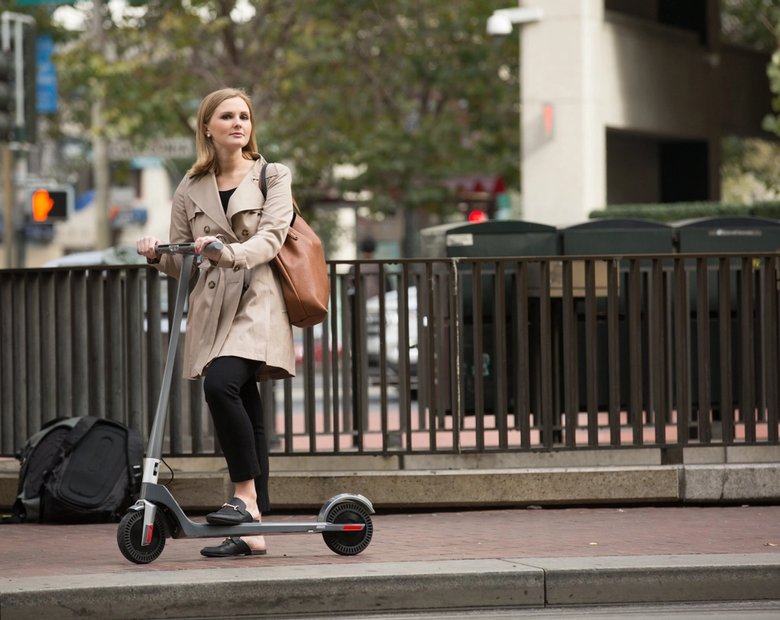
You’ve seen them all over your city’s streets, and everyone who rides one looks absolutely thrilled. So, why haven’t you picked up your own folding electric scooter yet? Maybe you’re worried about whether e-scooters require a driver’s license, or a…

The basis and the premise of my work is that we either operate out of love or we operate out of fear...Time is currency. The coolest thing about the scooters is that it's really quick, and it goes uphill. From there, traveling more efficiently and having a good time doing it--I think that's the most important thing.

Cynthia Leu has a full plate. A tech worker by day, Cynthia spends her off time balancing the parallel lives of a powerlifter, entrepreneur, mental health advocate, and more. Riding Unagi helps this USMC veteran cut down on everyday…

https://www.youtube.com/watch?v=7m2hVBE62LY Rasheed Muhammad is sick of Los Angeles traffic. In order to preserve his sanity, Rasheed has traded his everyday driving habit for the portable and beautiful Unagi Model One. It’s an essential accessory for navigating LA streets -- and…

Rich Lee, Co-Founder of San Francisco’s SPRO Coffee Lab, wants to share his love for coffee with the world. He depends on riding Unagi to avoid the hassle of navigating the parking crunch in the booming Mission Bay neighborhood.…


